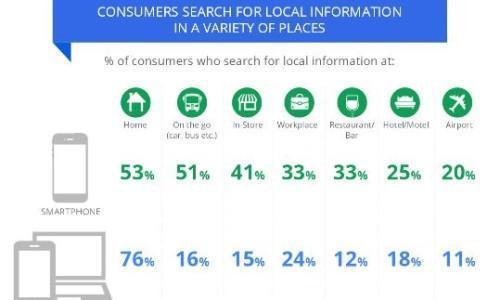The telephone directory – fat as all get out, split into weird yellow pages and white, and crammed with microscopic names and addresses. Once it was a treasured tome of information, regularly consulted or else used to elevate Sis at the dinner table. Now it’s gone the way of Beavis and Butthead.
Except it hasn’t. You don’t need it and still phone books keep coming, momentarily appearing on your doorstep before you gently guide them to the recycling bin.
They’re dead but they won’t stop. The Internet tried to kill it. Now maybe mobile phones will be the stake through the heart, the silver bullet that puts that zombie down.
Because now mobile is the leader in local search. In 2014, mobile search definitively surpassed computer inquiries for local information, reaching a volume of 66 billion annual queries in the US, reports BIA/Kelsey. Further, BIA/Kelsey predicts mobile will hit over 127 billion in 2018, double the volume of local searches originating from desktops.
Almost Cash in Hand
Local search is killer for local retail businesses. “Local” inquires comprise all those requests for information that get consumers to your door because they are already hungry to see your products and services and prepared to haul them away in big glossy bags. According to eMarketer, the top categories of local search conducted by smartphone users in 2014 were:
- Business Hours (54%)
- Directions to Store (53%)
- Local Store Address (50%)
Why Mobile Rules Local Search
Local search magnifies the web’s nature as a “pull” medium, where users are active seekers and generally goal directed, pursuing answers to specific questions. This utilitarian quality, reflected in local search, is doubly amplified for mobile users. Already on the go, they are hunting what is nearby and stalking the information that will get them there.

Naturally, local mobile search also beats desktop local searches in conversion. 2014 data gathered by Google confirms that local searchers often close the deal. 50% of shoppers who initiated a local query with their mobile device were inside the store that day, compared to 34% of desktop searches entering the retail outlet. Furthermore, 18% of local mobile searches resulted in a sale. In other words, mobile local searches are almost as good as cold, hard cash in a merchant’s hands.
Go Mobile or Go Home?
Mobile search’s growing corner on finding retail outlets around the corner is bound to boom because of the specific potentialities of mobile. Overtime, the contextual information and analytics of the mobile gadget –the where and when (and why) – will be automatically incorporated into Google search results, until they match the quality of information delivered by such sites as Yelp Now, which can filter data on restaurants to those with open reservations for 6:30 PM or later.
Advertisers, of course, have already noticed this consumer slide towards mobile search and are upping their spend. BIA/Kelsey says that “mobile ad spending on local or location-targeted placements will rise 56% this year to $6.7 billion, or 37% of all mobile ad dollars.”
Retailers too, of course, need to devote eagle-eye attention to the quality of their site’s mobile rendering and ensure that it is optimally performing for information-hungry customers. Otherwise, they too, like the phone book, might find themselves suddenly irrelevant to the modern consumer.
- Google’s AMP: Enemy or Ally to Your Mobile Friendly Website? - January 29, 2018
- Mobile Marketing: Optimize the Mobile Customer Journey - January 29, 2018
- Mobile Load Time: Increasing Mobile Page Speed to Improve Mobile Conversion - January 22, 2018
